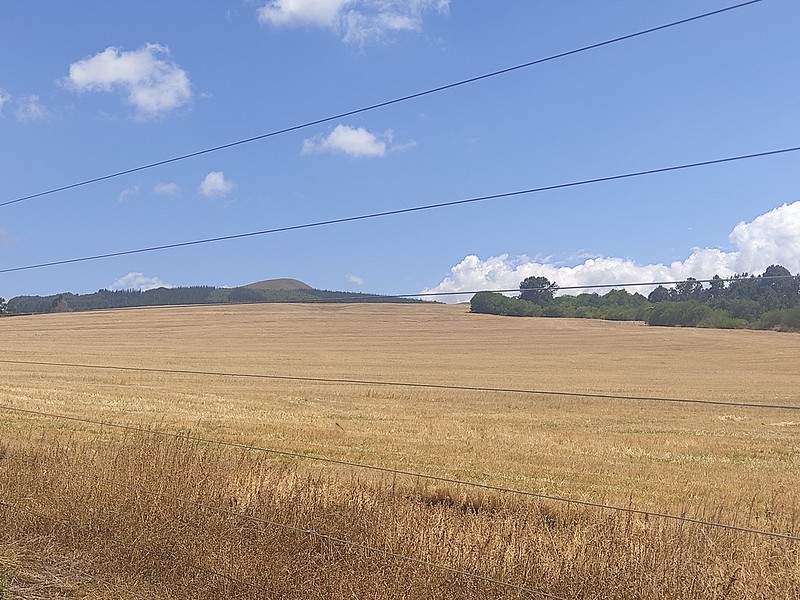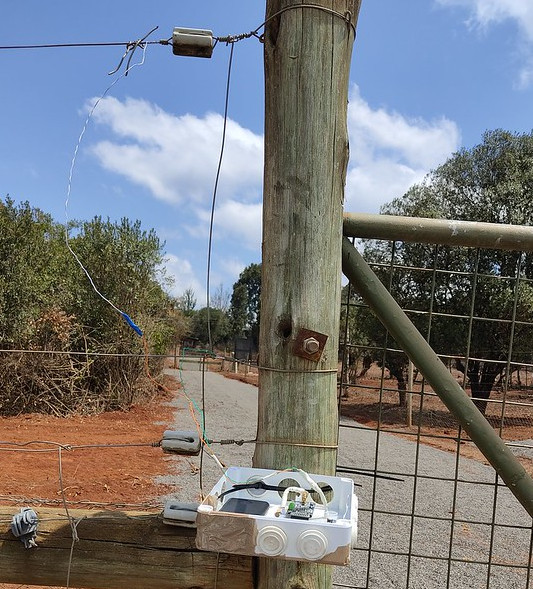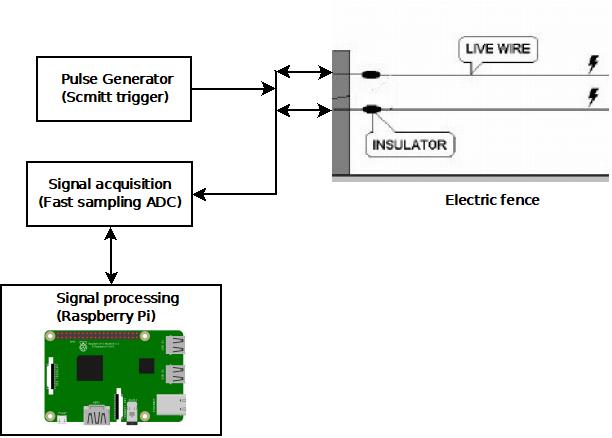A Time Domain Reflectometry (TDR) Based Electric Fence Fault Detector

Background
Electric fences are used to create protected areas (PAs) to restrict the movement of wildlife. Most PAs cover very large tracts of land. For this reason, very long cables are needed to create perimeter fences around them. A case example is the Dedan Kimathi University of Technology Conservancy that covers an area of 509,904 m2 (126 acres) and has a 4.8 km long electric fence around it. Larger conservancies require electric fences that span hundreds of kilometres. Electric fences are prone to faults. Faults affect the effectiveness of the fences and hence they need to be detected, localised and corrected as soon as they occur.
Current methods of fault detection and localisation involve continuous monitoring of the fence. Once a fault is detected, personnel are needed to walk along the fence to locate the fault and correct it. This is a tedious and time consuming process given the long distances of cables used to make the electric fences.
TDR
To improve fault detection in electric fences, we, at DSAIL, are developing a time domain reflectometry (TDR) based fault detector. The system is based on the principle of reflection in transmission lines. When a signal is sent down a cable, it experiences reflection due to impedance discontinuities. Faults introduce impedance discontinuities in cables and, therefore, cause reflection of incident signals. Different faults result in different reflected signals. By analysing the signal at the input of a cable, we can detect faults in the cable and also determine their type. TDR involves sending a fast rising pulse down a cable and then analysing the signal at the input port. Presence of a reflected signal indicates the cable is faulty. The time delay between the incident and the reflected signal is used to compute the distance to the fault.
The TDR fault detector will be built around the Raspberry Pi single board computer. Other important components are a Schmitt trigger pulse generator and a fast sampling analogue to digital converter (ADC). The Schmitt trigger will generate rectangular pulses that will be sent down a cable. The ADC will sample the signal at the input of the cable and feed the samples to the Raspberry Pi that will process the data to determine absence or presence of faults in the electric fence. The system will have programs to acquire data and process it.
Accomplishments
Time Domain Reflectometer Design
A Raspberry Pi based time domain reflectometer has been developed. The TDR system has an onboard Schmitt trigger that generates pulses to be fed to the cable under test (CUT). Programs to acquire the signal samples and process them have been developed and loaded onto the Raspberry Pi.

Data Collection
Dedan Kimathi Data Collection
The TDR system has been used to collect data using an electric fence at the Dedan Kimathi University of Technology Conservancy. Short circuit faults were simulated at different points of a section of the fence (about 110 m long) and then the TDR system was used to send pulses down the fence, sample them at the input and then save them for processing. The pulses used have an amplitude of 5 V and a frequency of 8.3 kHz and they are sampled at 31 MSPS.
Olpejeta Conservancy Data Collection
Two data collection exercises were conducted at Ol Pejeta Conservancy. During the first exercise, experiments were conducted using a 280 m long section of an electric fence at the conservancy. Ten short circuit and one open circuit faults were simulated and data was collected. The second data collection exercise involved conducting experiments with a 958 m long section of an electric fence. Open circuit and short circuit faults were simulated with the fence.




Data Analysis
Analysis has been done on the data collected during the data collection exercise to develop a TDR algorithm. Use this link to see the analysis done on the data.
System Architecture

Next Steps
- Explore how to interface the Raspberry Pi TDR with a live fence
- Develop a state of the art Raspberry Pi TDR
Publications
A low‐cost Raspberry Pi based time domain reflectometer for fault detection in electric fences
IET Science, Measurement & Technology, 2024A low-cost Raspberry Pi based time domain reflectometer for fault detection in electric fences
6th DeKUT International Conference on Science, Technology, Innovation and Entrepreneurship, Nyeri, Kenya, 9-11 November 2022